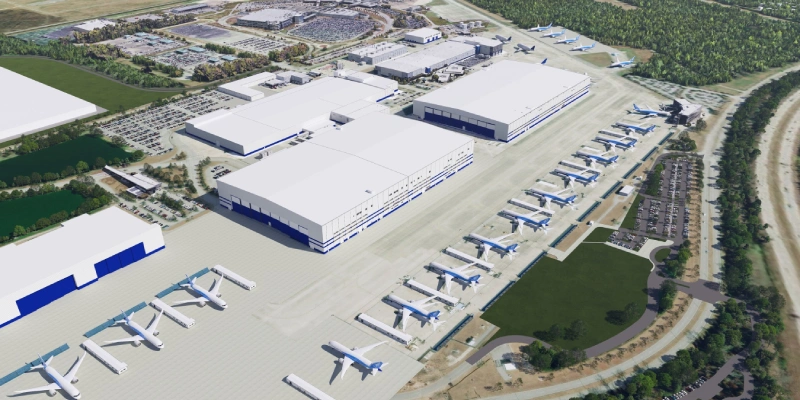On 28 October 1972, the world’s first twin engined widebody commercial aircraft, the Airbus A300B1, performed its maiden flight in Toulouse. The test flight crew were Captain Max Fischl, First Officer Bernard Ziegler, Flight Test Engineers Pierre Caneil and Gunter Scherer, with Romeo Zinzoni as Test Flight Engineer/Mechanic in the cockpit.
The flight lasted 1h 25 min. during which a maximum speed of 185kt (342.6Kmh) was reached at an altitude of 14,000ft (4,300m). Autopilot was engaged, moving surfaces were tested and landing gear retraction and deployment were performed.
→ Frontier Airlines unveiled its first Airbus A321neo with GTF engines.
The flight was initially scheduled for Friday 27 October but unfavourable weather conditions (fog) pushed it back by 24 hours.
Variants and derivatives
In 1974 the A300B4, the longer-range variant with increased weight and additional fuel tanks went into serial production. The A300 subsequently proved to be a particularly efficient platform allowing for further development, and numerous variants were designed, tested and built over a programme lifespan of nearly 35 years. These include the A300B10, which was eventually launched under the designation A310 in 1978 and which first flew in April 1982. The A310 was a shorter, reduced capacity, medium-long haul version of the A300, but with a completely new wing. The A300-600, an extended version of the A300B4 with a redesigned rear fuselage section carried over from the A310 allowing for two additional seat rows and additional containers underfloor and incorporating many of the improvements introduced on the A310, would first fly in 1983.
The A300-600F, a freighter version of the passenger aircraft, would enter into service in 1993. The A300B9 and A300B11 projects would eventually provide the basis for the A330 and A340 family of aircraft, with the same ground breaking fuselage cross-section that was introduced on the initial A300. Finally, last but not least, five A300-600ST “Belugas” would be built to meet Airbus’ internal requirements for increased oversized transport capacity and to replace the ageing Aero Spacelines Super Guppy fleet. Altogether 821 aircraft of the A300 family were produced in all configurations and types.
→ Jet2.com increases order for the A320neo Family to 98.
Innovative design features of the A300
Whilst the defining feature of the A300 was the fact that it was the first twin-engined widebody, constant design evolution across the family, along with the integration of new technology and materials, earned it a place in aviation history with many industry “firsts”: the first application of composites on secondary, and subsequently on primary structures, the first application of a two-man forward-facing cockpit for a twin-aisle with the A300 FFCC, the first use of electrical signalling for secondary controls and the introduction of both drag-reducing centre of gravity control and wingtip devices (introduced on the A300-600), and the first widebody designed for a two-man flight crew on the A310. With all of the A300’s innovations, Airbus was truly living up to its “setting the standards” motto of the time.
The A300 today
At present, more than 250 A300/A310 aircraft are in operation with 37 operators. 75% of the fleet are freighters and it is the third most-operated freighter type worldwide. More than 60% are operated by four major customers which project operating their fleets until at least 2030. The A300/A310 Programme team ensures customer satisfaction is maintained throughout the current projected life cycle of the A300/A310 Family by supporting operations but also by proposing upgrades and improvements to further increase mission capabilities. 50 years later Airbus has evolved into a global company with manufacturing, assembly and sales and services activities spread across five continents. One of the lesser publicised ambitions, at the time, of the founders of Airbus was for the A300 to be the first in a family of commercial aircraft; In 1968 an early advertisement for the A300 stated it was “the start of something big”. Little did they know how prophetic those words would turn out to be!
Related Topics
Boeing Maintains Momentum: 53 Deliveries in October, Nearing Best Year Since 2018
Boeing Advances 777-9 Certification: Enters Third Testing Phase
Boeing Begins Expansion Work at South Carolina Plant to Increase 787 Production
Judge Approves Agreement That Exempts Boeing from Criminal Trial for 737 MAX Crashes

Un apasionado por la aviación, Fundador y CEO de Aviación al Día.




